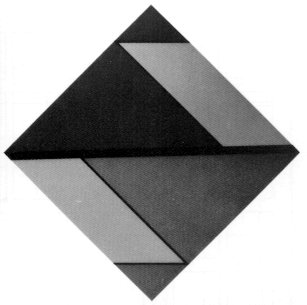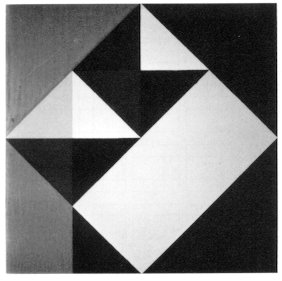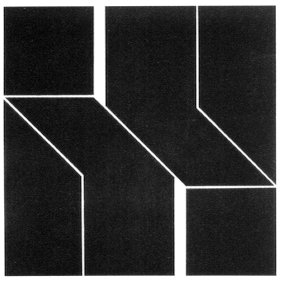|
(i) Equal-shaped division Many of the shapes obtained by equal-shaped division can be appreciated as they are. But, there are many cases in which the design becomes better by selecting the boundary lines of adjoining shapes. In addition to the clear and ordered feelings coming from the dividable structures, elements of variation from the differences in the areas and the shapes are added. KOHSEI (Basic Art & Design) which have variations of this order appear as Figures 193 and 194.
(ii) Equal area division After a space is divided into equal areas, some parts of the dividing lines are erased, and the fusion and consolidation of the shapes is attempted. Although these will result in shapes with various amounts of area, the ratios of the area are integers such as 1:2:3. Therefore, the clear images of the shapes are maintained. The ordered relationships between the numbers which can be simply divided is an element to give a person who sees the work pleasure. (Figs. 195, 196). Though it is an effective method for changing the width and shape of the dividing lines, it is also important to avoid too many modifications.
|



